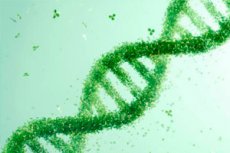New publications
Study Confirms Role of DJ-1 Gene in Parkinson's Disease
Last reviewed: 03.08.2025

All iLive content is medically reviewed or fact checked to ensure as much factual accuracy as possible.
We have strict sourcing guidelines and only link to reputable media sites, academic research institutions and, whenever possible, medically peer reviewed studies. Note that the numbers in parentheses ([1], [2], etc.) are clickable links to these studies.
If you feel that any of our content is inaccurate, out-of-date, or otherwise questionable, please select it and press Ctrl + Enter.

A mutant gene called DJ-1 causes a recessive form of Parkinson's disease, but the molecular mechanism is still poorly understood. To understand how DJ-1 hydrolyzes cyclic 3-phosphoglyceric anhydride, a highly reactive, toxic cellular metabolite, researchers in Japan performed molecular simulations and biochemical analyses, including mutation analysis, confirming a role for DJ-1 in the pathogenesis of inherited Parkinson's disease.
By revealing the amino acids involved in its catalytic activity, this work lays the foundation for future functional studies of DJ-1. The study is published in the Journal of Cell Biology.
The DJ-1/PARK7 gene, associated with a recessive familial form of Parkinson's disease, encodes the DJ-1 protein, which has potential antioxidant activity and protects cells from mitochondrial damage. It has been attributed a wide range of biochemical functions - from a redox-regulated chaperone and transcriptional regulator to glyoxylase, cysteine protease, and cyclic 3-phosphoglyceric anhydride (cPGA) hydrolase - but its exact function remains unclear.
However, several facts about DJ-1 indicate that its primary role may be in the hydrolysis of cPGA. This enzymatic function is consistent with the molecular structure of DJ-1, and previously reported ester activity may reflect its role in cPGA hydrolysis. The instability of cPGA makes this substrate difficult to use experimentally, which has limited our understanding of the role of DJ-1 in converting this reactive byproduct of glycolysis to detoxified 3-phosphoglycerate (3PG).
To solve this mystery, a team of researchers led by Professor Noriyuki Matsuda and Associate Professor Yoshitaka Moriwaki from the Institute for Integrated Studies, Science Tokyo, combined molecular simulations with biochemical analyses and revealed the catalytic mechanism of cPGA hydrolysis by the protein DJ-1.
“Mutational analysis aimed at identifying amino acid residues critical for cPGA hydrolase activity has so far been limited to residue C106, and no structural model of the cPGA–DJ-1 complex or hydrolysis mechanism has been proposed,” explains Matsuda, describing the motivation for his study.
To demonstrate the molecular mechanism of cPGA hydrolysis, the team studied the structure of the DJ-1 complex with cPGA. Molecular dynamics simulations of this complex revealed the key amino acids that form the DJ-1 “binding site” and are responsible for cPGA recognition and binding.
They then mutated these amino acid residues to elucidate the details of the mechanism of cPGA hydrolysis. These experiments revealed that residues E15 and E18 were important for the formation of the catalytic pocket and the establishment of hydrogen bonds with the cPGA molecule. Residues G74, G75, and C106 were involved in stabilization and the formation of the tetrahedral intermediate in the reaction pathway, while A107 and P158 determined the formation of hydrogen bonds with cPGA functional groups and the formation of the cPGA binding site, respectively.
Importantly, the researchers showed that deletion of P158 and a missense mutation in A107 (also found in familial Parkinson's disease) completely abolished DJ-1 hydrolase activity toward cPGA in vitro, confirming the pathophysiological consequences of DJ-1 mutations. Based on these results, the team proposed a new six-step molecular model of the DJ-1 hydrolase reaction.
To assess the physiological significance of DJ-1, the researchers compared cPGA hydrolase activity in wild-type and DJ-1 knockout cells. In DJ-1 knockout cells, cPGA hydrolase activity was significantly reduced, leading to accumulation of cPGA-modified metabolites. This indicates that cPGA is the major physiological target of known DJ-1 substrates, and the observed mutations result in complete loss of cPGA hydrolysis function.
Summarizing their findings, Moriwaki and Matsuda conclude:
"We believe that the molecular mechanism we present will provide a solid basis for future functional studies of DJ-1 and will deepen our understanding of the pathogenesis of inherited Parkinson's disease."
